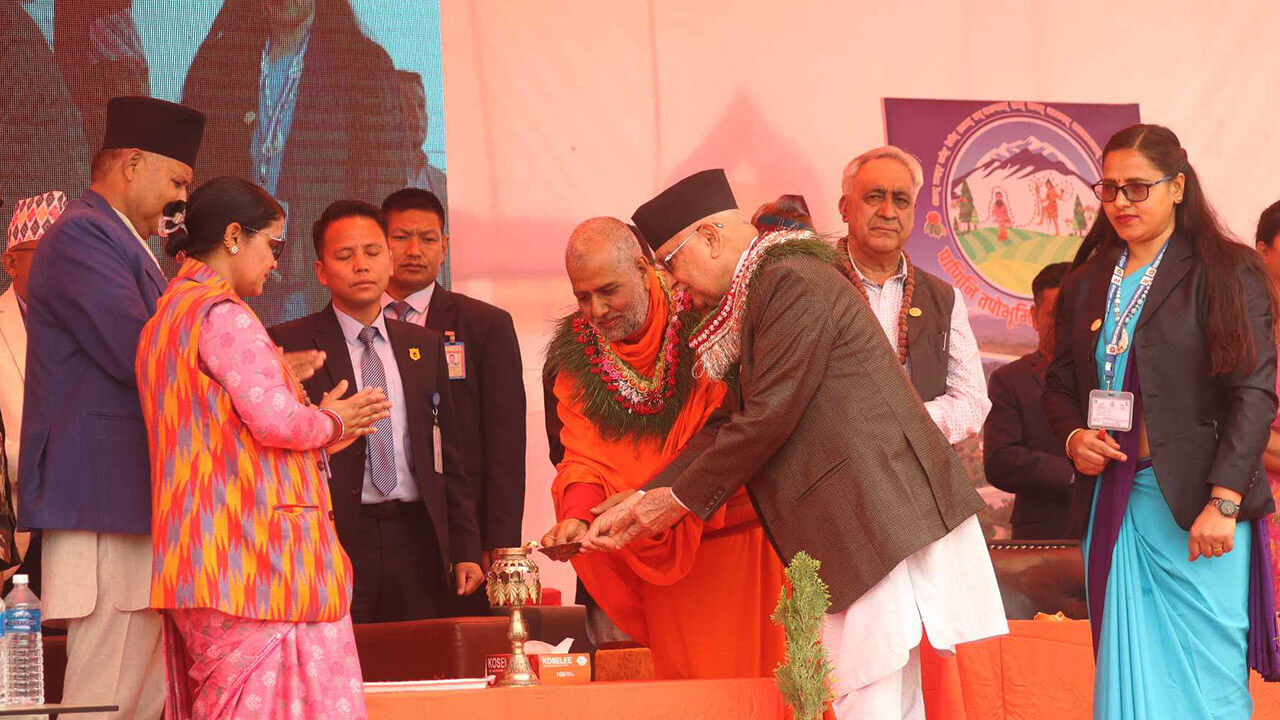
A two-day Panini Tapobhumi Conference held in Panini, Arghakhanchi, concluded with the issuance of a seven-point declaration.
The conference, concluded on Thursday, announced that Gurukul education will be initiated to promote Panini grammar and the Sanskrit language. It also stated that the government would be requested to incorporate Sanskrit language and grammar studies into the modern education system.
Previously, Sanskrit language used to be taught in government schools starting from Grade 4. During the armed conflict, the then Maoists had stopped Sanskrit education. Although it was later included as an elective subject, it was taught only in a limited number of schools. However, the schools that adopted Sanskrit as a core subject continued the teaching and learning.
At present, Sanskrit is taught at Tribhuvan University, Nepal Sanskrit University, and a few Vedic institutions, but the number of students is found to be low. The conference, held in Arghakhanchi—where Maharshi Panini meditated and gifted grammar to the world—has decided that Sanskrit language and grammar studies should be integrated into the modern education system.
The declaration also mentioned working in collaboration with national and international researchers of Sanskrit and linguistics for the establishment and operation of study and research centers in coordination with Sanskrit University.
As Panini region has long been a center of meditation, penance, and creation, arrangements will be made to build necessary infrastructure for research and creative work that could contribute to human welfare.
Near the Panini Tapobhumi are several religious sites such as the hermitage of Sage Durvasa, the penance site of Maharshi Devadatta’s daughter Ruru, the Ruru area, and the confluence of the Kaligandaki River.
To the west of this Tapobhumi lies the Nartanachal hill, where Ravan danced to please Shiva, the historic Supadeurali Temple, and to the south, the Banaganga River where Ram shot an arrow to break through the rock and release water—these are all important historical and religious locations. Therefore, the declaration also mentions developing a pilgrimage trail from Nartanachal to this Tapobhumi, and conducting a feasibility study for the development of the Panini Circular Route by connecting other religious and cultural sites in neighboring districts that could attract and engage visitors.
It has been stated that introductory textbooks on Paninian grammar will be prepared in coordination with Arghakhanchi and neighboring districts. A master plan will be prepared soon for the overall development of the Panini region.
Arghakhanchi Conference




